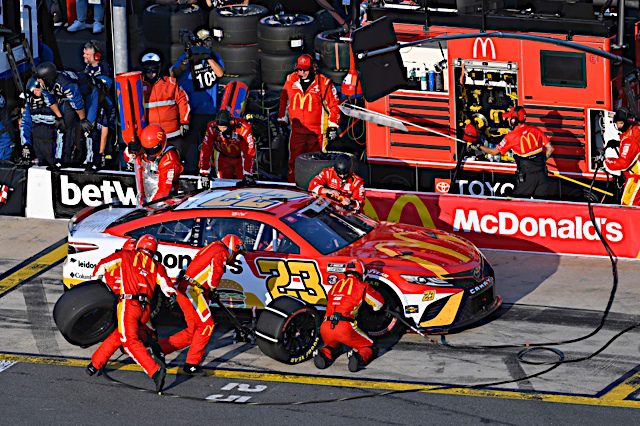Should NASCAR alter its damaged vehicle policy?
Luken Glover: The DVP has been effective in performing its task thus far. It isn’t perfect, so yes, a couple of alterations are needed. As mentioned, a driver’s DVP clock should commence when they arrive in the box, not when they enter pit road. I also agree that the clock needs to be readjusted to 10 minutes. We have seen cars capable of meeting the minimal speed and still have an opportunity at gaining valuable points fail to meet the DVP, while others who are in rolling dumpsters have made it on the track. At the same time, the DVP clock challenges teams to display their skills and make efficient work. Bubba Wallace‘s crew failed to recognize the clock, so that was more of a mistake from a crew perspective. Still, the DVP could be improved and continue to work its purpose in an efficient manner.
Brad Harrison: There definitely needs to be more flexibility and margin for error to give teams a bit more time — see Wallace’s team’s apparent miscalculation of the DVP clock as an example. The intent is obviously so that a down-power car is not holding the leaders up, but the current threshold may as well be giving someone the electric chair for stealing a pack of gum from the gas station. There’s no reason to scrap the DVP policy, but it needs adjusting.
Josh Roller: NASCAR’s damaged vehicle policy needs amended, that is for sure. Really, it’s just a simple change. Teams need more time on pit road, so the time needs to be increased and the clock should only run when the car has either broken the plane of the pit box or when the car is stationary. Time should be increased to 10 minutes. These cars are new and the parts are scarce. Chase Elliott‘s damage should not have led to retirement because his team could have repaired it but there simply wasn’t enough time to repair a piece that is extremely weak compared to years past. In the case of Wallace not making minimum speed, that part…
Click Here to Read the Full Original Article at Frontstretch…

